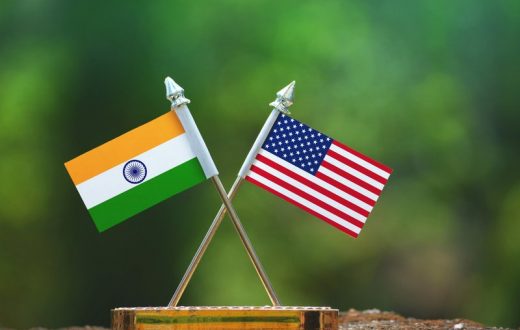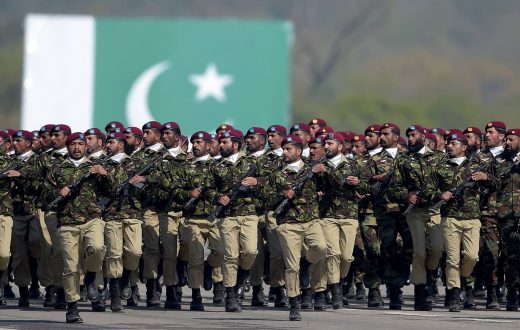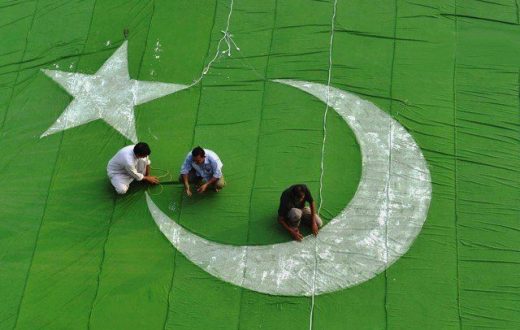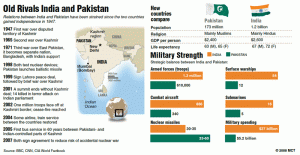
1947: August 14/15. British India is partitioned into India and Pakistan as part of the independence process. Majority Muslim areas in the West (now all of Pakistan) and East (the place now called Bangladesh) form Pakistan. The British also allow the nominal rulers of several hundred “princely states,” who were tax collectors for the British and served at British pleasure, to decide whether they wanted to join India or Pakistan. Pakistan demands Kashmir accede to it. The Hindu ruler of Kashmir does not make a choice. Kashmir has three major ethnic areas: Ladakh in the northwest, which is majority Buddhist; the Kashmir Valley (controlled by India) and the part now controlled by Pakistan, which is majority Muslim, and Jammu (in the south), which is majority Hindu. The overall majority is Muslim.
1948: “Tribesmen” from Pakistan invade Kashmir with the support of the Pakistani government. The ruler of Kashmir asks India for help. India demands that Kashmir should accede to India first. The ruler agrees. India sends forces to Kashmir and the invasion is blocked. Kashmir is divided into a Pakistani controlled part and an Indian controlled part. This de facto partition continues to this date with the dividing line being known as the Line of Control.
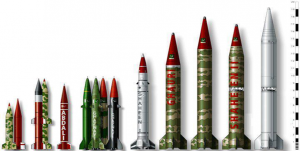
1948: India takes the Kashmir issue to the U.N. Security Council, which passes a resolution calling on Pakistan to do all it can “secure the withdrawal” of Pakistani citizens and “tribesmen” and asking that a plebiscite be held to determine the wishes of the people of Kashmir. Neither the force withdrawal nor the plebiscite has taken place.
1962: India and China fight a border war. China occupies a part of Ladakh.
1965: India and Pakistan fight a border war along the India-West Pakistan border and the Line of Control in Kashmir. U.N. brokered cease fire and withdrawal to pre-war lines affirmed by the leaders of the two countries at a 1966 summit meeting in Tashkent, USSR (now Toshkent, Uzbekistan).
1970-1971: An election in (East and West) Pakistan results in an overall majority for an East Pakistani party, which is ethnically mainly Bengali. The Pakistani military refuses to allow the Parliament to convene. East Pakistanis demand autonomy, then independence in the face of brutal repression by the Pakistani military. Guerilla warfare ensues. About ten million refugees stream into India from East Pakistan. India also provides sanctuary to Bangladeshi guerillas. Pakistan attacks airfields in India and Indian-controlled Kashmir. India strikes back in West Pakistan and also intervenes in the East on the side of the Bangladeshis. The U.S., in a “tilt” towards Pakistan, sends a nuclear-armed aircraft carrier, the Enterprise, and its battlegroup, to the region, in an implicit nuclear threat to India (which influences nuclear politics of India in favor of nuclear testing). Pakistan loses the war on both fronts and Bangladesh becomes independent.
1972: India and Pakistan sign a peace accord, known as the Simla (or Shimla) agreement, according to which both sides agree “to settle their differences by peaceful means through bilateral negotiations or by any other peaceful means mutually agreed upon between them.” Both countries agree that they will not unilaterally try to alter the Line of Control in Kashmir.
1974: India tests a nuclear device. Pakistan accelerates its nuclear weapons program.
1980s: U.S. supports Islamic resistance to Soviet occupation of Afghanistan and also the dictatorship of Zia-ul-Haq in Pakistan, which promotes Islamic fundamentalism in Pakistan.
Late 1980s: There is a state-level election in the Indian-controlled portion of Kashmir. There is evidence of fraud. Militancy rises in Kashmir. In 1989, the Soviets quit Afghanistan. Islamic militants from outside South Asia now become engaged in Kashmir, with the support of the Pakistani government. The violence in Kashmir becomes more dominated by foreign fighters and by religious fundamentalism. In the late 1980s and early 1990s, Hindu fundamentalism begins to become more powerful as a political force in India.
1990s: Violence intensifies in Kashmir. Islamic militants carry out ethnic cleansing in the Kashmir Valley, terrorizing non-Muslims, mainly Kashmiri pundits, causing large numbers of people to flee, mainly to Jammu. Pakistan supports the cross border infiltration. The Indian military responds with repression to the terrorism, foreign infiltration, and the domestic insurgency, which are now all mixed up. There are serious human rights abuses on all sides.
1998: A coalition led by the Hindu-fundamentalist party, the BJP, comes to power in India. India and Pakistan carry out nuclear weapons tests and declare themselves nuclear weapon states. Pakistan announces that it may, under certain circumstances, use nuclear weapons first to neutralize India’s conventional superiority, making reference to NATO’s Cold War doctrine of potential first use in case of a European war with the Soviets. India says it will not use nuclear weapons first.
1999: Indian Prime Minister, Atal Behari Vajpayee, travels to Lahore, Pakistan for a peace meeting with Prime Minister Nawaz Sharif. There is great hope for peace. Three months later Pakistan-based militants invade the Kargil area in Indian-controlled Kashmir, with the support of the military. A military confrontation, with the possibility of nuclear war, ensues. Nawaz Sharif travels to Washington and President Clinton convinces him to withdraw Pakistani forces from Kargil. Confrontation ends. Nawaz Sharif is overthrown in a military coup led by General Musharraf, one of the architects of the Kargil war. (Musharraf proclaims himself President of Pakistan in the year 2000.)
September 11, 2001: Well-known tragic events in the United States. Terrorist attacks kill about 3,000 people.
October 1, 2001: A terrorist attack on the Kashmir state legislature in Srinagar. 38 people are killed.
October 7, 2001: U.S. launches a war in Afghanistan, under the rubric of the War on Terrorism. President Musharraf becomes a U.S. ally and allows Pakistan to become a base of operations for the United States. Al Qaeda, Taliban, and their supporters in Pakistan feel severe pressure.
December 13, 2001: A terrorist attack on India’s Parliament. Fourteen people (including five attackers, as well as security guards and two civilians) are killed.
Aftermath of December 13: India mobilizes and moves hundreds of thousands of soldiers to the border with Pakistan, including the Line of Control in Kashmir. The danger of conventional and nuclear war rises.
May 14, 2002 to date (early Sept 2002): A terrorist attack on families of Indian servicemen. More than 30 people killed. India threatens to retaliate. Pakistan makes implicit threats of nuclear weapons use in case of Indian attack. Peak of the conventional and nuclear confrontation reached in May-June 2002. Greatest threat of nuclear war since the Cuban missile crisis of 1962. U.S. troops and war strategy in the region imperiled. U.S. shuttle diplomacy defuses the immediate crisis as Pakistan promises to end cross border infiltration. India does not retaliate. Tensions remain high and the threat of war and nuclear weapons use persists.




